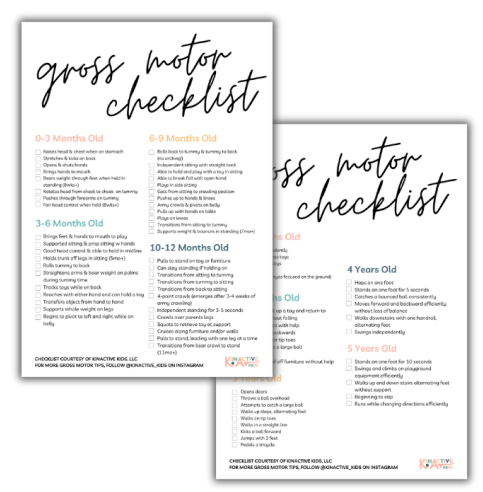Stretching Out Torticollis
Do you know what Torticollis is? Let’s walk through how exactly it can affect your little and some great ways to work through it.

Torticollis can be a real pain in the neck.
Is that a dad joke? Are mom jokes a thing? Well, now they are. I made a mom joke. I hope you laughed instead of rolling your eyes, especially since I laughed. At my own joke. What am I becoming?
Anyways… Often confused for a simple stiff neck or delay in development, it can be hard to know when your kiddo may be suffering from Torticollis.. Let’s dig in to what exactly it is and then look at some ways to treat it.
What is Torticollis?
Torticollis is a tightness in your kiddo’s neck muscles on one side (SCM). The tightness ends up limiting their motion and ability to turn their head. It typically shows up as a tilt to one side, resulting from a turning to the opposite side. Children with Torticollis may also have Plagiocephaly, or as it’s more commonly known, “flat head.” Without voluntary movement of the neck, your little will favor a certain position. This can put them at risk for developing a flat spot on either one or both sides of their head.
How can I address both??
Play! That’s right – play positions that encourage motion can make a big difference.
Try placing toys on the neglected side of your little to encourage turning. This will help your kiddo work on playing and reaching. I can’t imagine you’re surprised that my first suggestion is to bribe your child with a toy!
Expert tip: Hold the opposite shoulder back when you turn your little’s head to increase the stretching of their neck.
To gently increase your kiddo’s range of motion, hold the same position and gently turn their head with your fingers only. This will let them reach full motion. If your child resists at any point, let go, relax and try again. Forcing a twist can lead to more stress, so it’s important to listen to your little and stop when they tense up.
Baby sit ups are another great exercise, especially for head control. Pull your little up to a sitting position every diaper change, roughly 5 to 10 times. If the head lags significantly, place your child on your lap and pull up using two fingers on the back of their shoulders. If they actually have decent head control, gently pull them into a sit (2 months and up) using their hands instead of the back of their shoulders. Then wait until their head initiates a tuck before coming to sitting.
My go to tummy time position also helps stretch out Torticollis. Choosing a tolerable, on the go tummy time position that encourages pushing through the arms is a must. When working with littles, I love placing them over my leg, inclined, and tucking their arms under their body. This encourages the strengthening of the trunk and is a great stretch for the neck.
Our final exercise for the day: the over-the-leg neck stretch. This stretch opens the tight front muscles of the neck, which can restrict the pushing through of your little’s arms. The ability to push through lets them lift their head, which allows for rolling. Place your kiddo on your leg, along their shoulder blades and let their chin lift naturally. Pull down with your fingertips below the collar bone for a deeper stretch.
As you can tell, Torticollis can lead to a host of other issues. It can prevent tucking, head turning, and even rolling, while leading to flat head. However, there are plenty of simple to do stretches where a little bribe can help work wonders. Slow and consistent stretching of the neck muscles will have your little turning their head and relaxing their neck again in no time!
For step by step walk through, check out the video above!


